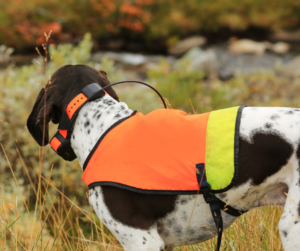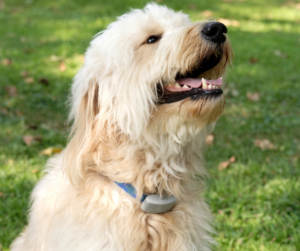Michael Baugh CDBC CPDT-KSA CSAT
TL;DR A personal post about shock collar training and how it tragically impacts not only our dogs but us as human beings.
I’m writing you because I care about you; I like you. From the start I was interested in your wellbeing. I wished a peaceful and joyful life not just for your dog but for you. Some of what I have to say might hurt, though. So, let’s agree now that this is not about you, not you as an individual, not just you, but you in great numbers, an amalgam of you the many.
You called me when your dog was two. She had bitten three people on walks, two of them runners. One of them threatened to file a report. She said she’d have your dog put down. You were crying. I was quiet. I listened. If you remember this call let me say again, this is not about you. You’re an amalgam, which means you call me this way about once a month, sometimes more, sometimes less. You are crying because you love your dog and I’m listening because I care about you as a fellow human being. You mention the shock collar training you did. I don’t say anything. I think about it, but let you dry your tears instead.
 When your dog was a puppy you used to laugh when she tried to pick up a ball half her size. She’d run a few steps and stumble. You laughed and picked her up and offered her a smaller toy and you played until she was exhausted and she cuddled on the sofa with you until you both fell asleep. When she got older your dog pulled on leash and barked at people. She got bigger, more gangly, stronger. You hired a trainer who taught you how to yank on her leash and then how to yank on her leash with a prong collar. You trusted the trainer and did what she said. It was a neighbor who told you about the shock collar. No, it was a friend. But, she called it an e-collar. No, it was your aunt. Someone told you. It was someone. They used the shock collar or sent their dog off to a trainer who used it. Their dog was perfect, they said. And, that sounded perfect to you.
When your dog was a puppy you used to laugh when she tried to pick up a ball half her size. She’d run a few steps and stumble. You laughed and picked her up and offered her a smaller toy and you played until she was exhausted and she cuddled on the sofa with you until you both fell asleep. When she got older your dog pulled on leash and barked at people. She got bigger, more gangly, stronger. You hired a trainer who taught you how to yank on her leash and then how to yank on her leash with a prong collar. You trusted the trainer and did what she said. It was a neighbor who told you about the shock collar. No, it was a friend. But, she called it an e-collar. No, it was your aunt. Someone told you. It was someone. They used the shock collar or sent their dog off to a trainer who used it. Their dog was perfect, they said. And, that sounded perfect to you.
You called to tell me your dog wouldn’t leave the back patio. You have a huge yard with an invisible fence. Your dog can see the woods and the wildlife and she has so much space, but she won’t budge. Why will she only poop and pee on the patio? You called to tell me your dog barks and snarls at men who come into your home. Your trainer used a shock collar to teach her this was wrong. Yesterday your dog bit someone coming in. You called to tell me your dog is afraid to go on walks. It’s cool and sunny out but she won’t walk past the driveway, even when you take the shock collar off. You carry her for the first block and even then she keeps pulling to go back, head low, panting the whole time.
When your dog was a puppy she came to you, face bright and tongue flapping out the side of her mouth. You called her your bouncing pom pom, the way she ran to you. You played and she licked your face and you thought you were the luckiest person in the world, which you were. Your friends loved her. She was beautiful. Even at 8 and 9 months when other dogs start to look awkward in their own bodies, she was beautiful. But she jumped a lot and knocked things over. She wanted to play all the time. She just wouldn’t settle down. So your neighbor-friend-realative told you about a place you could send her. Their dog went there for 3 weeks and was perfect. Perfect sounded good and you sent her away. She was thin and seemed a bit shy when she came back home. She was more subdued, slept more, hung out by your side and didn’t cause much trouble. When the barking started and the chewing, you sent her back again. If once was good, twice would be better.
I know this hurts, I tell you when you call. When we meet I tell you how shock collars work. That’s hard.
I know this hurts, I tell you when you call. We meet for weeks and I never tell you what the shock collar did to your dog. It would break your heart.
I know this hurts, I tell you when you call. You don’t hire me. We never meet. I have an extra cocktail with dinner. I forget that has anything to do with our call and forgetting feels good.
I know this hurts, I tell you when you call. And, it doesn’t matter. Your dog is shattered. You already know how this is going to end. I do too. I don’t sleep well that night.
Here’s the short version. Punishment is the introduction of a stimulus that decreases a target behavior. Example: if a dog experiences a shock to the neck when she approaches the boundary of your property, she will be less likely to go there in the future (she may stay on the patio).
You are explaining yourself to me. “It’s only the beep, she only got shocked once and now all we need is the beep.” You don’t want me to think bad things about you; you’re a good person; you are kind. I don’t think you’re a bad person. I like you. I feel bad for you. I want to help. This is what I wake up in the morning to do – to help you. I work hard at it. Sometimes it’s enough. Sometimes.
If I’m sloppy as a positive reinforcement dog trainer we end up with a dog who begs for food or stares at the treat bag. I’m not sloppy. I teach you how to not be a sloppy trainer, too. If someone is haphazard with a shock collar your dog never knows when the shock is coming, or from where (other than it attacks her neck from nowhere), or why. Why? Painful attempts to punish behavior always have side effects. Always. Your dog tries to escape the pain or the fear. She locks up on walks or runs away when you call. Your dog avoids situations altogether. She won’t leave the patio or her room or the driveway. Or, your dog lashes out. The pain out of nowhere with no escape – or the threat of it – is too much to bear. She growls, snarls, and bites. That’s usually when you call, when she’s had enough and lashes out.
You’re calling me because your dog, though physically healthy, is psychologically damaged. She paces the house, can’t seem to settle down. The vet put her on three medications that don’t seem to be helping. She cornered your husband in the kitchen. Your husband, the one who used to roll the too-big ball to her so he could see her tackle it and fall over. You both laughed so hard then. She was having fun, too. Now, she growls at your husband and at you. You’re afraid of her, your bouncing pom pom. Sometimes she lies by you, exhausted. But you haven’t been able to cuddle her in months. Not really. Not anymore.
 I’m sorry. You’ve called twice today already and four times this week. Not you, but you in numbers, dozens over the past few months, scores of you over the last two decades. It gets to me sometimes and sometimes I am not strong; I am not calm. I shouldn’t let this stuff get to me. I definitely shouldn’t lash out at you. But, I tell you that the beep is like a man pulling his fist back. “You only need to get punched once to know the terror of what that means,” I say. I know my words are sharp and when I get off the phone I hate myself for saying it that way. I don’t know you yet. I don’t know what you’ve experienced, if anyone has ever raised a fist to you. I’m an asshole for going there. But, I also don’t know how to tell you that no this is not your fault but yes you caused this – because it’s not your fault (you were given shitty information) and because your choices did cause it. I know that hurts. It hurts me, too.
I’m sorry. You’ve called twice today already and four times this week. Not you, but you in numbers, dozens over the past few months, scores of you over the last two decades. It gets to me sometimes and sometimes I am not strong; I am not calm. I shouldn’t let this stuff get to me. I definitely shouldn’t lash out at you. But, I tell you that the beep is like a man pulling his fist back. “You only need to get punched once to know the terror of what that means,” I say. I know my words are sharp and when I get off the phone I hate myself for saying it that way. I don’t know you yet. I don’t know what you’ve experienced, if anyone has ever raised a fist to you. I’m an asshole for going there. But, I also don’t know how to tell you that no this is not your fault but yes you caused this – because it’s not your fault (you were given shitty information) and because your choices did cause it. I know that hurts. It hurts me, too.
You call me and I can tell by your voice what this is about. We’ve worked together for months. There’s a veterinary behaviorist involved, a team of experts.
You’ve been wonderful and things have improved, you say. But, there was an incident.
You’ve been wonderful and things have improved, you say. But, it feels hopeless. That young vibrant dog you once had is long gone. You don’t think she will ever be the same again.
You’ve been wonderful and things have improved, you say. But, you are done. You don’t have any more emotional energy.
You’ve been wonderful and things have improved, you say. But, not enough. You’ve already called the vet. She’ll be euthanized in the morning.
I’m trained for these calls. And, as many times as you’ve called with this news I’ve never cracked. I hold steady. I care about you more than anything and I stand by your side. This is your decision, not mine. My role is to support you. When I cry it’s after the call. I cry for you most of all. As my wise friend says, you were doing the best you could with the information you had at the time. I believe that. I cry for your dog, too. This should have gone differently from the start. But, it didn’t and here we are.
It hasn’t always gone this way for us, of course. You and I have had our high-fives and victory laps together and it’s felt great. You did it. You pulled your dog back from the brink. Your dog, for her part, recovered, healed well from the terror of the past. She made it. You made it. I am so happy for you, for her, for us. We’ve been through a lot, you and I, you big wonderful collective you. I’ve written too much already, I know, but I could write more. I could go on and on about you because I care about you. I like you.
I’ll end here with one small request. And, this part is for you, specifically you, reader. Will you be a voice for our dogs? You are someone’s neighbor. You are someone’s friend, someone’s family member. When someone asks you about training, about shock collar training, will you be the one individual who speaks up? They may not know any better yet, this someone you know, this someone you care about. You know better, though. Did you know shock collars are against the law in some countries? It’s because shock collar training hurts our dogs; it can damage them psychologically. In too many cases the fallout from this frightening and painful training hurts us as well, damaging our relationship with our dogs, endangering our dogs’ lives. Be the voice who speaks this truth. If this is your story, then tell it. Your neighbors and friends and family deserve to know better. Their dogs deserve a voice who will speak for them.
Michael Baugh is a dog trainer in Houston, TX. He specializes in aggressive dog training including helping dogs who are survivors of shock collar training.



